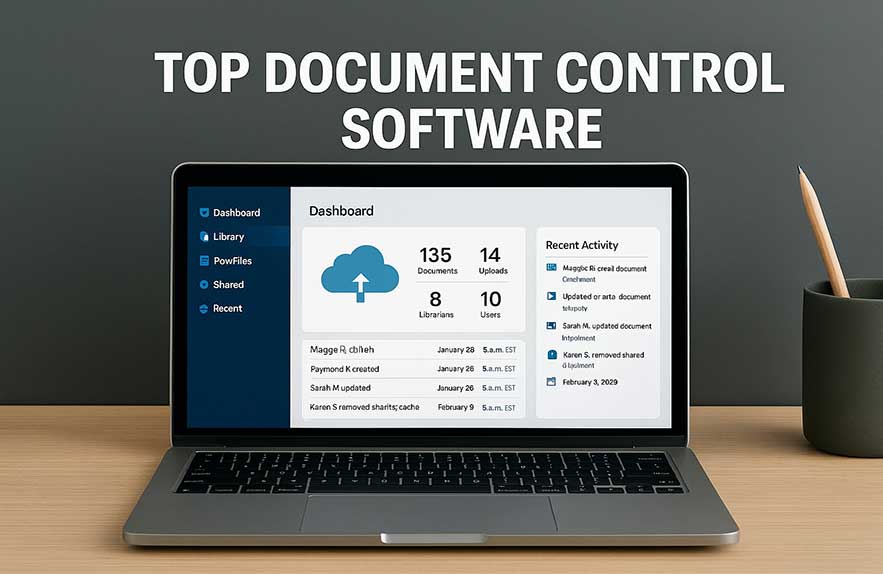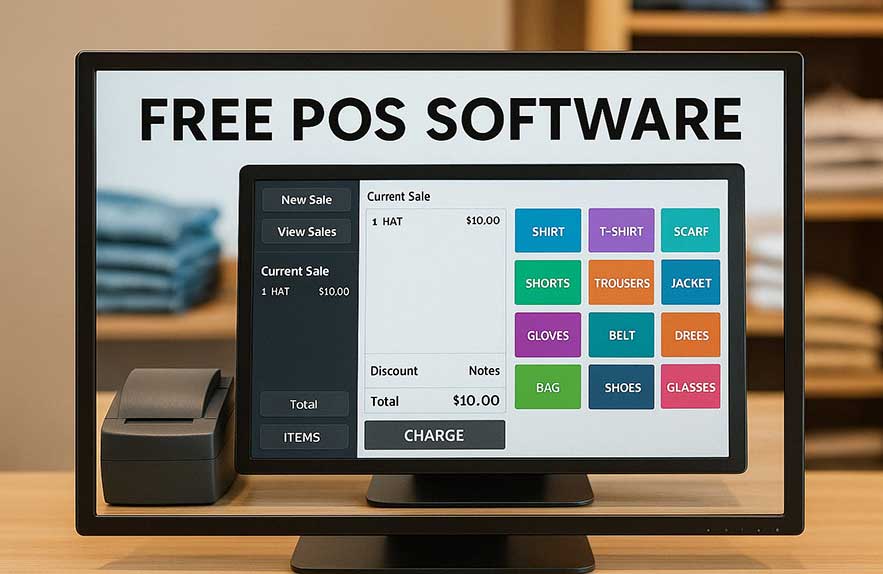
What Is Document Control Software and Why It Matters
If you’ve ever lost track of the latest version of a file, or had two people working on different copies of the same document, you already know the pain of disorganized storage. That’s where document control software comes in. These tools help teams keep everything in one place, manage access, and make sure everyone’s working with the right version — no confusion, no duplicated effort, and no lost files.
At its core, document control is about structure. Instead of dragging files into random folders or sharing links through five different apps, you use a centralized system to store, edit, approve, and archive documents. That’s especially useful for businesses handling contracts, invoices, reports, or any kind of shared documentation. Tools like Zoho WorkDrive and ONLYOFFICE offer free tiers that do exactly this — they help teams organize better and avoid costly mistakes caused by scattered information.
Unlike simple cloud storage, a good control system offers permission levels, version history, audit trails, and sometimes built-in approval workflows. That means you can track who edited what and when — especially important in legal or compliance-heavy industries. Some platforms even alert users when a document is outdated or needs review. This kind of smart automation can save hours every week and help you avoid rework.
And yes, there are plenty of options that don’t cost a thing. We’ll look at some of the best document management software free tools later in this guide. Many of these are geared toward small businesses or startups that want better organization without paying for an enterprise system. You’d be surprised how capable some of them are, even at zero cost.
If you’ve already taken steps to streamline your business with tools like free POS software, this is the next logical upgrade. Just like a POS system helps you track sales and inventory, a document control tool helps you track the flow of information inside your company. Think of it as the digital equivalent of a locked file cabinet — but smarter, faster, and accessible from anywhere.
Coming up next, we’ll dive into the key benefits of using this type of software, especially if you’re managing a growing team or trying to reduce file chaos across departments.
Table of Contents
Key Benefits of Using Document Control Software
For a lot of small businesses, file management starts out simple: a couple of shared folders, maybe some emails with attachments, and a few backup copies on a flash drive. But as your team grows — and the number of documents with it — that system starts to fall apart. That’s when document control software goes from “nice to have” to essential.
The most obvious benefit is version control. You no longer have to wonder if the file named “_final_v3_EDITED” is really the right one. These systems automatically track changes, show you the full version history, and prevent people from overwriting each other’s work. That’s a big deal when multiple team members are working on contracts, reports, or collaborative projects at the same time — especially when you’re relying on a document management system software to keep things organized.
Another key feature is access management. Not everyone in your company needs to see every document — and some files are sensitive by nature. Document control software lets you set user roles, restrict access, and even create approval flows. This is especially helpful in industries like healthcare, legal, or finance where compliance matters. If you’re using tools like Bitrix24 or OpenDocMan, these features come built-in, even in their document management software free versions.
Automation is another game-changer. Some platforms allow you to set up document expiration dates, automatic reminders for updates, or approval chains that notify the right people in the right order. A good document control system lets you build efficient routines into your workflow without needing manual oversight.
Just like how lowering your CPU usage helps your system run smoother, a solid document control software solution helps your team work cleaner. No more duplicated files, missed updates, or digging through email threads for the “right” attachment. Everything stays in one place, up to date, and easy to find when you need it.
Up next, we’ll look at some of the top-rated document management software free options you can try right now — including who they’re best for and what makes each one stand out.
Best Free Document Control Software Options
There’s no shortage of document tools out there, but only a few stand out as truly useful for small businesses — especially when you’re not ready to commit to a paid plan. Below are some of the most practical and reliable document control software options that strike a good balance between usability, control, and cost (as in, $0).
1. Zoho WorkDrive – Clean, professional, and generous with its features. It’s more than just cloud storage — it includes user roles, team folders, and fine-tuned access control. You can preview documents without downloading, share them securely, and restore older versions. It’s a top choice for businesses looking for the best document management software experience without paying upfront. Try Zoho WorkDrive.
2. ONLYOFFICE – If collaboration is a priority, this one’s worth a look. ONLYOFFICE offers a document editor that rivals Microsoft Word and Google Docs, with built-in version control and permission settings. It’s ideal for remote teams that need to co-edit files or track changes together in real time. Teams working with proposals, policies, or technical documents will appreciate its simple yet powerful layout.
3. OpenDocMan – An open-source document control software solution designed for control and compliance. While it’s not as visually polished as some commercial tools, it excels in functionality. You can create approval workflows, manage file status, and keep audit logs. It’s a great option for companies that need a legal document management software approach with full visibility and audit capability. Explore OpenDocMan.
4. Bitrix24 – More of an all-in-one suite than just a document manager, Bitrix24 includes file storage, CRM tools, and task management — all under one free plan. The document control features include editing permissions, file locking, and automatic syncing. It’s perfect for businesses that want to combine documents with day-to-day operations in one dashboard.
Each of these platforms brings something different to the table. Whether you’re prioritizing compliance, collaboration, or general organization, one of these tools is likely to be the right fit. In the next section, we’ll help match the best tool to your specific use case.
Choosing the Right Document Control Tool for Your Needs
Not every business needs the same level of control, and what works for one team might not be a good fit for another. Choosing the right document control software depends on your company’s size, industry, and how you handle documents day to day. The goal isn’t to find the most advanced tool — it’s to find the one that fits into your routine without getting in the way.
Need something simple and fast to set up? Zoho WorkDrive offers a clean, structured layout that’s perfect for small teams. If your focus is real-time editing and collaborative writing, ONLYOFFICE is a great choice. It works well for teams who frequently co-author policies, project briefs, or marketing copy that needs regular revision.
For companies in compliance-heavy industries, a more structured document control system like OpenDocMan makes more sense. It’s built with audit trails and approval flows in mind — great for legal, healthcare, or engineering teams where accountability matters. While it may take more effort to install, the result is full control over your documents and how they’re handled internally.
If you want a tool that goes beyond document handling — like tracking tasks or communicating with your team — Bitrix24 might be the right pick. It combines several business functions into one dashboard, letting you manage files alongside other daily operations without switching platforms.
The key is to think about your workflow and where documents fit into it. Do you just need a better way to store files, or are you looking to enforce structure, track edits, and scale your process as your business grows? Answering that question will point you to the document control software that fits your team best.
Setup, Usability, and Support: Getting Started Smoothly
One of the biggest benefits of today’s document control software is how easy it is to get started — even if you don’t consider yourself tech-savvy. Most modern platforms are designed for small teams, meaning you don’t need an IT department to get things running. That makes a huge difference when you just want to upload documents, invite a few teammates, and start organizing files in a way that actually makes sense.
Cloud-based tools like Zoho WorkDrive and Bitrix24 walk you through the basics as soon as you sign up. Within minutes, you can set up folders, assign access permissions, and upload your first batch of documents. ONLYOFFICE also offers a cloud version with a familiar interface — great if you’re used to working in Google Docs or Word. These platforms are designed to reduce friction and help you focus on your actual work, not the tech behind it.
OpenDocMan, being open-source, does require a little more technical setup, especially if you choose to host it on your own server. But that also gives you total control, which is a huge plus if your business needs to store documents internally for compliance reasons. If you’re comfortable following setup guides or have someone on your team with basic admin skills, it’s a strong option for long-term control and flexibility.
Support is solid across most platforms. Zoho and ONLYOFFICE both provide searchable knowledge bases, video tutorials, and community forums. Even their free plans give you enough help to troubleshoot common problems. Bitrix24 offers email support and user forums, while OpenDocMan users usually rely on documentation or peer help, which works well if you like being part of an open-source community.
Most document control systems update automatically if you’re using a hosted plan, which means you’ll always be running the latest version with security patches and new features. For self-hosted tools like OpenDocMan, updates are manual, but you get the added benefit of deciding when and how updates are rolled out — ideal for businesses that value control over convenience.
All in all, the setup experience for today’s top document control software options is smooth and well-supported. Whether you want a simple plug-and-play cloud platform or a hands-on, customizable system, there’s a tool out there that can meet you where you are.
Growing with Your Document Control System
Starting with a free document control software platform is a smart move — not just because it saves money, but because it helps you build habits and systems that scale. You learn to organize files properly, assign roles, and create workflows that make sense for your team. And when the time comes to grow, the foundation is already there.
Most of the platforms we’ve covered — from Zoho WorkDrive to Bitrix24 — offer simple upgrade paths. As your team expands or your document volume increases, you can move to a paid plan without changing how you work. Your files stay put, your team permissions stay in place, and all the familiar tools are still right there, just with more power behind them.
OpenDocMan gives you that flexibility from the start. Because it’s open-source, you’re free to adjust how it works as your business evolves — whether that means adding custom workflows, syncing with internal databases, or building in extra reporting. It’s the kind of tool that grows with you, especially if you have a technical team or work in a compliance-heavy industry.
When you start early with document control software, you also avoid the hassle of migrations down the line. You won’t need to move everything to a new system or retrain your team — the structure will already be there. That kind of stability is worth more than most people realize when their business starts growing fast.
In the end, a solid document control solution does more than store files — it helps your business stay organized, compliant, and prepared for the next step. And thanks to the number of powerful free tools available today, there’s no reason to put it off. Start now, build the habits early, and you’ll be ready when opportunity comes knocking.

